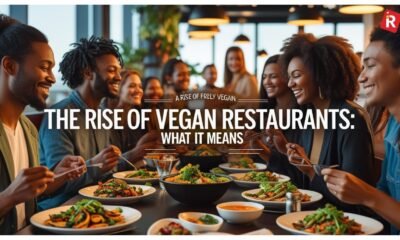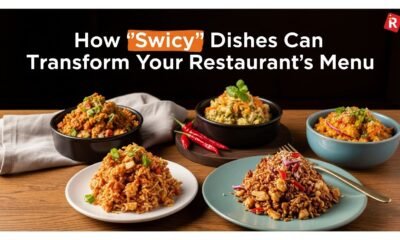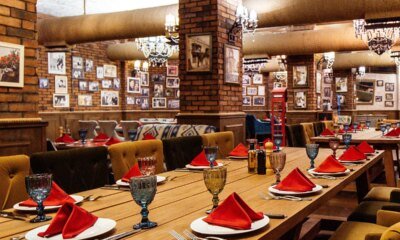Restaurants & Food
10 Best Instagram Marketing Strategies for Restaurants
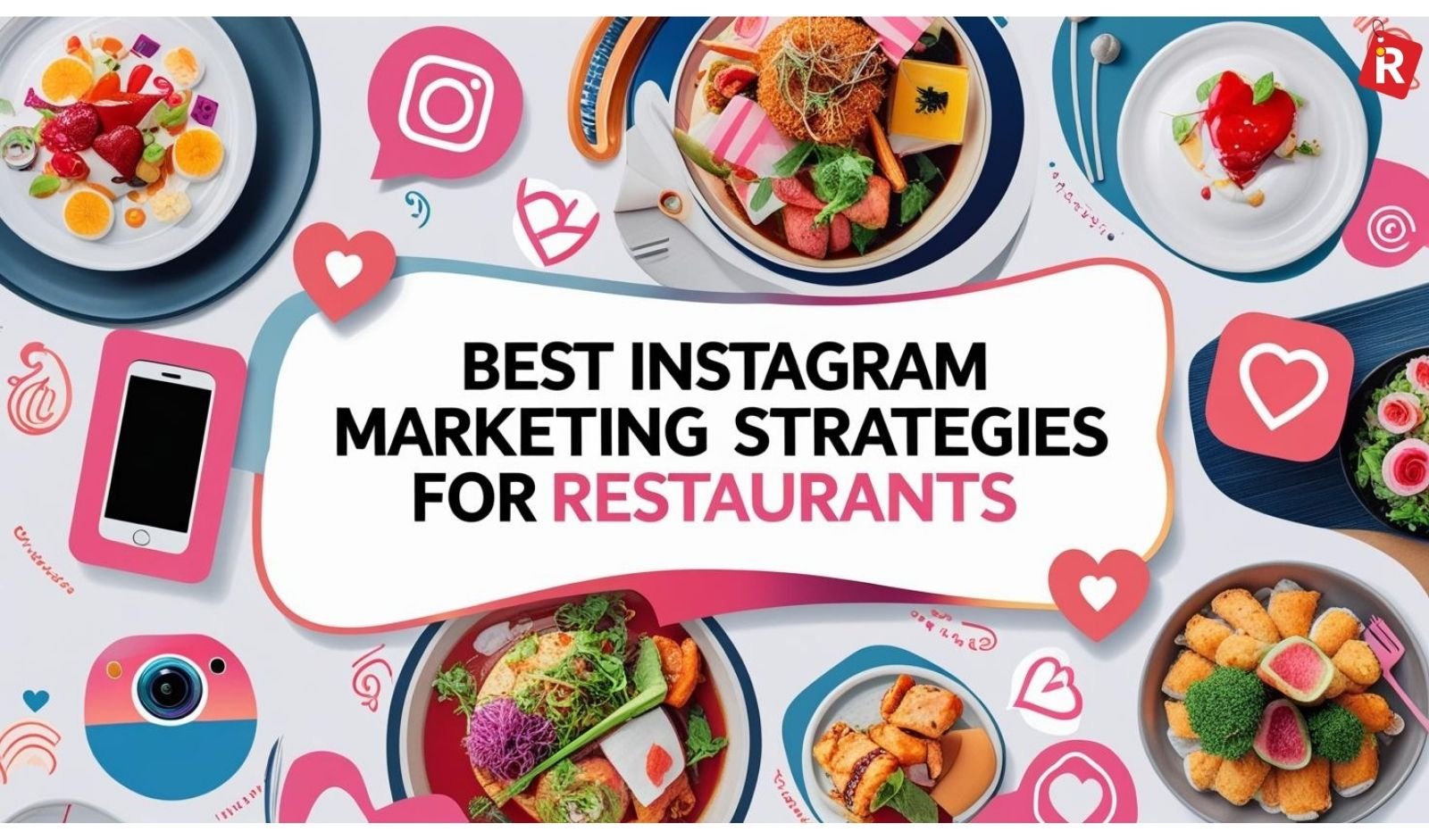
A restaurant’s digital presence is nearly as important in the visually driven digital age as the smells coming from its kitchen. Being active on social media means you can attract potential customers. And Instagram is the best medium for doing this. You can present mouthwatering food and create a lively community. Instagram has developed into a potent marketing tool that is more than just a photo-sharing app, particularly for the food and beverage sector.
Understanding Instagram marketing for restaurants in India and other countries involves more than just sharing eye-catching images; it also includes creating a calculated strategy that converts likes into repeat business and reservations. The top ten restaurant Instagram marketing techniques are described in this in-depth article to help your business expand rapidly and stand out in a congested industry.
1. Master the Art of High-Quality Food Photography and Videography
Instagram can show dishes that are a feast for the eyes, and your food should be the main attraction. Photos that are blurry and poorly lit are a common mistake. A significant difference can be achieved by investing in professional food photography, knowing the fundamentals of food styling, and utilizing natural lighting.
Pay Attention to Appetizing Visuals: Take note of your food’s distinctive plating, texture, steam, and vivid colors. When possible, use natural light, and make sure your backgrounds are simple and uncluttered so that the food is the main attraction.
Beyond the Plate: Don’t stop at merely completed meals. Display foaming coffees, freshly chopped ingredients, sizzling pans, or expertly made cocktails. These “process” photos have the potential to be really captivating.
The Key Is Consistency: Create a recognizable visual aesthetic that captures the essence of your company, whether it’s sleek and contemporary or rustic and homey. As a result, the stream becomes unified and identifiable.
For restaurants in India, where a variety of cuisines create a riot of colors and textures, having excellent visuals is essential to drawing in customers and emphasizing the genuineness of your goods.
What’s new: How to Brand your Restaurant?
2. Leverage Instagram Reels for Maximum Reach and Engagement
Reels are now the one Instagram feature that provides unmatched organic reach. Algorithms love short-form, lively videos, which can greatly increase your exposure to new viewers.
Behind-the-Scenes Magic: Display snippets of your kitchen as it works, a chef fervently creating a specialty dish, or the vibrant atmosphere during busy times. The “making of” their favorite cuisine is something that people adore.
New Menu Item Reveals: Use captivating, fast cuts and popular music to introduce new dishes. Create suspense and give the audience a preview.
Highlights of the Chef and Staff: Present your group! You can engage with your audience and personalize your company by creating brief, entertaining videos of your servers, chefs, or bartenders.
Food Challenges & Trends: Engage in popular audio challenges or design your own culinary challenges tailored to a particular restaurant to promote user involvement.
Quick Tutorials/Tips: Give a brief wine-food pairing hint or a quick recipe hack that draws inspiration from your cuisine.
Use Trending Audio: To make your reels more discoverable, include popular songs and sounds.
Optimize for Local Discovery: To show up in “Near You” suggestions, always include geo-tags and location stickers in your reels.
Reels often work best for restaurants from mid-morning to early afternoon (10 AM – 2 PM) and again in the evenings (7 PM – 9 PM) on weekdays, when customers are often planning their meals or unwinding.
3. Craft an Optimized and Engaging Instagram Profile
Your Instagram profile serves as your digital storefront. Make the most of your initial impression with potential customers.
Compelling Bio: A compelling bio should identify the type of restaurant you are, the cuisine you provide, and your unique selling point. Include relevant keywords (for example, “Best Italian Food in Your City” or “Vegan Cafe”).
Link in Bio: Make effective use of the link in your bio. Send customers to your online ordering platform, reservation page, website, or special campaign. Tools like Linktree can assist you in managing various links.
Contact Information: Ensure that your contact button functions properly, allowing users to phone, email, or get directions immediately.
Branded Highlights: Use Instagram Story Highlights to organize critical information such as your menu, daily offers, customer testimonials, behind-the-scenes content, events, and FAQs. Create unique, branded covers for these highlights to keep the look consistent.
Read new: How to Choose Restaurant’s Location?
4. Engage Actively with Your Audience
Instagram is more than just a means for broadcasting; it’s a social network. Building a devoted community and telling the algorithm that your material is valuable requires active engagement.
React Promptly: Give prompt, sincere responses to direct messages (DMs) and comments. Express gratitude to clients for their praise and properly handle their issues.
Pose Questions: In your captions, promote conversation by posing queries about dietary restrictions, favorite foods, or dining experiences.
Run Polls and Quizzes in Stories: To engage followers, collect preferences (e.g., “What’s your favorite spice level?”), and promote a sense of community, use interactive Story stickers.
Go Live: Conduct live cooking demonstrations, behind-the-scenes tours, or even Q&A sessions with your chef. This fosters genuineness and a closer bond.
5. Leverage User-Generated Content (UGC)
Your greatest marketers are your customers. It’s genuine, reliable, and extremely impactful when they post pictures or videos of their meal at your restaurant.
Promote Tagging: Put discreet signs on tables, menus, or in “Instagrammable” locations around your restaurant to invite customers to tag your account (@yourrestaurantname) and use your custom hashtag (#YourRestaurant).
Repost with Credit: Always get consent before reposting excellent user-generated content on your feed or Stories, making sure to tag the original creator. In addition to offering new information, this gives clients a sense of worth and inspires others to contribute.
Conduct Contests: Hold competitions where patrons can enter to win a meal or a discount by tagging your business in their finest food photos.
Know more: How to Survive in Reviving Restaurant Markets?
6. Collaborate with Local Food Influencers and Bloggers
Influencer marketing is revolutionary, particularly in the food sector. Popular local community pages, micro-influencers, or even local food bloggers can expose your restaurant to a large, relevant audience.
Find Relevant Influencers: Seek out people who have a devoted local following and whose content complements the brand of your business.
Provide Experiential Opportunities: Ask them to join you for a free lunch, a sample, or a first look at a new menu.
Set Clear Expectations: Clearly define your expectations by talking about the kind of content they will produce (posts, reels, and stories) and the main points you want them to make.
Emphasis on Authenticity: Influencers’ sincere enthusiasm and reviews have a greater impact than excessively promoted content.
7. Utilize Instagram Ads for Targeted Reach
Instagram’s powerful advertising platform enables highly targeted campaigns that can greatly increase your reach and encourage particular activities, even though organic reach is still crucial.
Targeting Options: Utilize Instagram Ads to connect with prospective clients based on demographics (gender, age), preferences (food, eating out, particular cuisines), and—most importantly—location (e.g., clients in the 5–10 km radius of your restaurant).
Campaign Goals: Specify your goal, such as increasing direct messages, website clicks (for online purchases or reservations), or profile visits.
Carousel ads: In a single ad, promote several dishes or other facets of your restaurant, such as the atmosphere, specialty cocktails, or dessert selection.
Retargeting: Retargeting is the practice of reminding people who have already interacted with your content or visited your website to become paying clients.
8. Run Engaging Contests and Giveaways
Contests are a great way to increase follower numbers, increase interaction, and create talk about your restaurant.
Define Clear Rules: Clearly outline the requirements for entry, such as liking the post, tagging friends, following your account, and sharing to Story.
Provide Interesting Rewards: Free meals, gift cards, special dining occasions, or small-group catering are all excellent sources of motivation.
Variety of Contests: Try “tag a friend” giveaways, caption contests, photo contests, or restaurant trivia.
Frequency: Avoid going overboard. Periodically hold competitions to keep things interesting without undervaluing your products.
Know this: How to Manage your Restaurants’ Brand Identity?
9. Optimize for Local SEO with Hashtags and Geotags
Local visibility is crucial for a business. Instagram provides easy-to-use yet powerful solutions to guarantee that you appear in local searches.
Location Tags: In every post and story, make sure to provide the actual address of your restaurant. Your content will show up when users look for local locations.
Local Hashtags: Use a combination of general and specific local hashtags. Examples: #FaridabadFoodies, #BestRestaurantsInFaridabad, #HaryanaEats, #IndianCuisineFaridabad, #WhatsCookingFaridabad.
Branded Hashtag: Make your restaurant’s hashtag distinctive and promote its usage.
Relevant Niche Hashtags: Use hashtags that are relevant to your food, ingredients, or dining experience. (e.g., #PaneerTikka, #VeganOptions, #FineDining, #CasualEats).
10. Maintain a Consistent Posting Schedule
Maintaining your audience’s attention and appeasing the Instagram algorithm depend on consistency.
Create a Content Calendar: Arrange your posts ahead of time, describing the week’s or month’s themes, recipes, and promotions. This guarantees a constant supply of new material.
Optimal Timing: Use Instagram Insights to find out when your particular audience is most active. In India, the ideal times for restaurants on Instagram are generally between 9 AM and 1 PM on weekdays (for lunchtime planning) and between 7 PM and 9 PM (for dinner planning/post-dinner scrolling). Try different things and make adjustments.
Use a Variety of Content Formats: Don’t only share pictures. To keep your feed interesting and dynamic, incorporate reels, stories, carousels, and occasionally live videos.
Quality over Quantity: Although regularity is crucial, never sacrifice the standard of your material in the name of frequency. Three average posts are not as good as one excellent one.
Check out: How to Win Restaurant Business during Slowdown
Your Restaurant’s Digital Growth Engine
Having a good Instagram presence is now essential to restaurant success in the cutthroat culinary scene of India or any other country. Your restaurant can turn its Instagram profile into a potent tool for drawing in new clients, cultivating devoted followings, and eventually generating substantial revenue growth by carefully implementing these ten tactics, which range from eye-catching images and dynamic reels to strategic partnerships and data-driven insights. Adopt these strategies, share your distinctive culinary tale, and see how your brand grows online.
Restaurants & Food
Art-Inspired Dining: India’s Restaurants Redefine Culinary Experiences | art-inspired restaurants, restaurant design, immersive dining, art and food, Burma Burma, unique dining, India restaurants, culinary experience, restaurant trends, artistic interiors
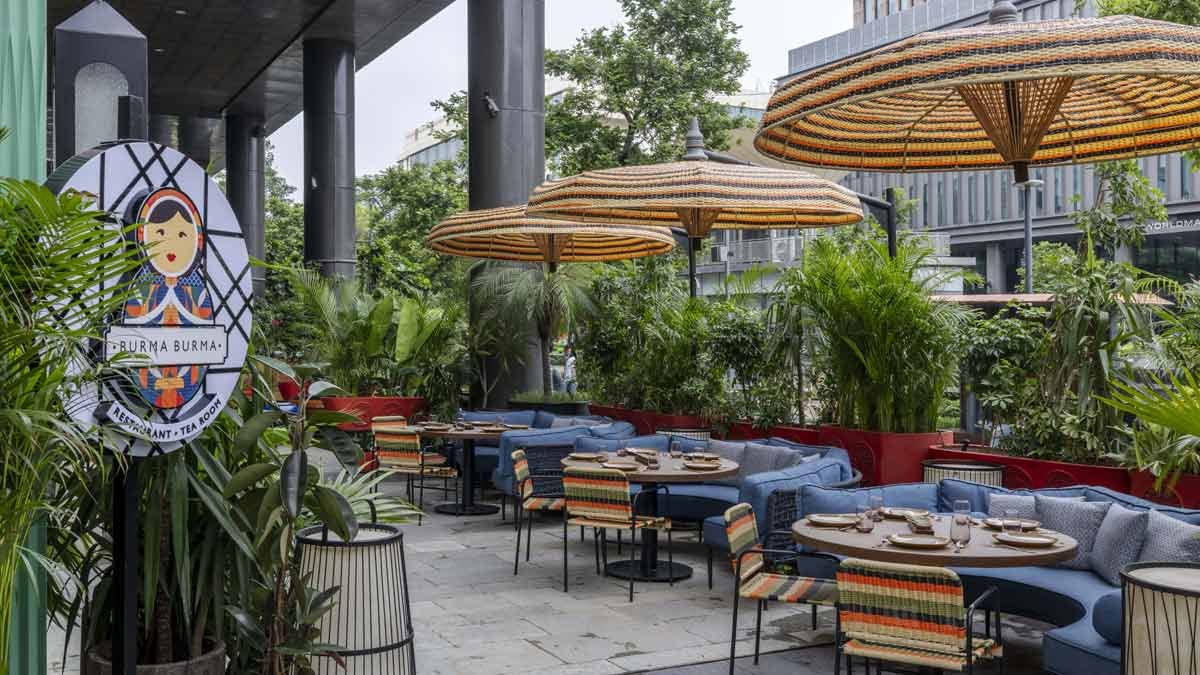
An imposing installation inspired by Burma’s giant Kyaiktiyo pagoda – a golden Buddhist temple perched atop a precariously balanced boulder – hangs at the centre, immediately catching the eye. On a cabinet are neatly displayed Burmese artefacts — papier mache, lacquerware, and wooden figurines. Upstairs, a wall hand-painted in subtle pastel hues instantly evokes peace. The mural, featuring several pagodas, depicts the ancient city of Bagan, a UNESCO World Heritage Site often called the land of pagodas.
This isn’t an art gallery or museum. It’s the newest outlet of Burma Burma, a premium casual restaurant chain by Mumbai-based Hunger Pangs Pvt Ltd, recently opened in Aerocity, New Delhi. Founder Ankit Gupta speaks as passionately about Burmese art and culture as he does about food — if not more so. That passion is evident in each of his outlets, with every location drawing inspiration from a different aspect of the Burmese heritage. “For example, our restaurant in Saket, New Delhi, celebrates the tribes of Burma,” says Gupta during a walkthrough of the Aerocity space, as he explains how Burma gets its name from its largest ethnic group — the Bamar tribe. Similarly, at the Ahmedabad outlet, a 50-foot wall showcases Burmese textile art.
Not only Burma Burma, a growing number of restaurants in India are increasingly incorporating art into their spaces, creating a sensorial experience that moves from palette to palate.
Burma Burma | Prashant Bhat
Take, for example, Ristorante by Dali, a new Italian restaurant in New Delhi’s Greater Kailash (GK) 2 that pays homage to Spanish surrealist Salvador Dalí. Or Begeterre, on Gurugram’s Golf Course Road — inspired by Roman culture, it’s billed as India’s first museum-themed restaurant. Then there’s Arts Room, at Eldeco Centre in Delhi’s Malviya Nagar, which takes its name seriously: here, art is as much on the menu as the decadent food.
It’s not every day you get to see artworks by global icons under one roof, let alone at a restaurant. But that’s what happens at the NMACC Arts Café at BKC Mumbai, which has on display masterpieces from the likes of British artist Damien Hirst, known for his death-centred artworks, Japanese contemporary artist Takashi Murakami, Bangladeshi visual artist Rana Begum, among others. The space is designed by Gauri Khan and stands true to its moniker.
Down south is Hortus, a cocktail bar in Panampilly Nagar, Kochi. Inspired by the 17th-century book Hortus Malabaricus by the then-Dutch governor of the Malabar region, the space oozes botanical heritage of the Malabar with its deep green and pale mustard walls and ceilings, hand-painted flowers, and ceiling installations depicting the inspiration of the place.
Hortus | via Instagram
In a beautiful description about the interplay between art and food, the three-Michelin-star restaurant Osteria Francescana, run by celebrated Italian chef Massimo Bottura, says on its website: “Contemporary art is an inspiration, a guide and a muse.” And that the artworks at the restaurant aren’t mere decorations but “windows onto the landscape of ideas that widen horizons and open up possibilities.”
And while talking of the interplay between art and food, who can forget the OG Khyber, the over six-decade old restaurant at Mumbai’s Kala Ghoda, which houses not one but three paintings by none other than MF Husain. What’s even more interesting is when the establishment got burnt to the ground in 1985, during its renovation, Husain reportedly painted his artworks in its very premises.
Suffice to say, paintings, murals, and striking pieces are increasingly a part of the culinary experience. What it requires is a keen eye and intrigue for your next dining experience to completely stand out.
Restaurants & Food
5 Restaurants From India’s Pre-Independence Era That Must Be On Your Bucket List | Food
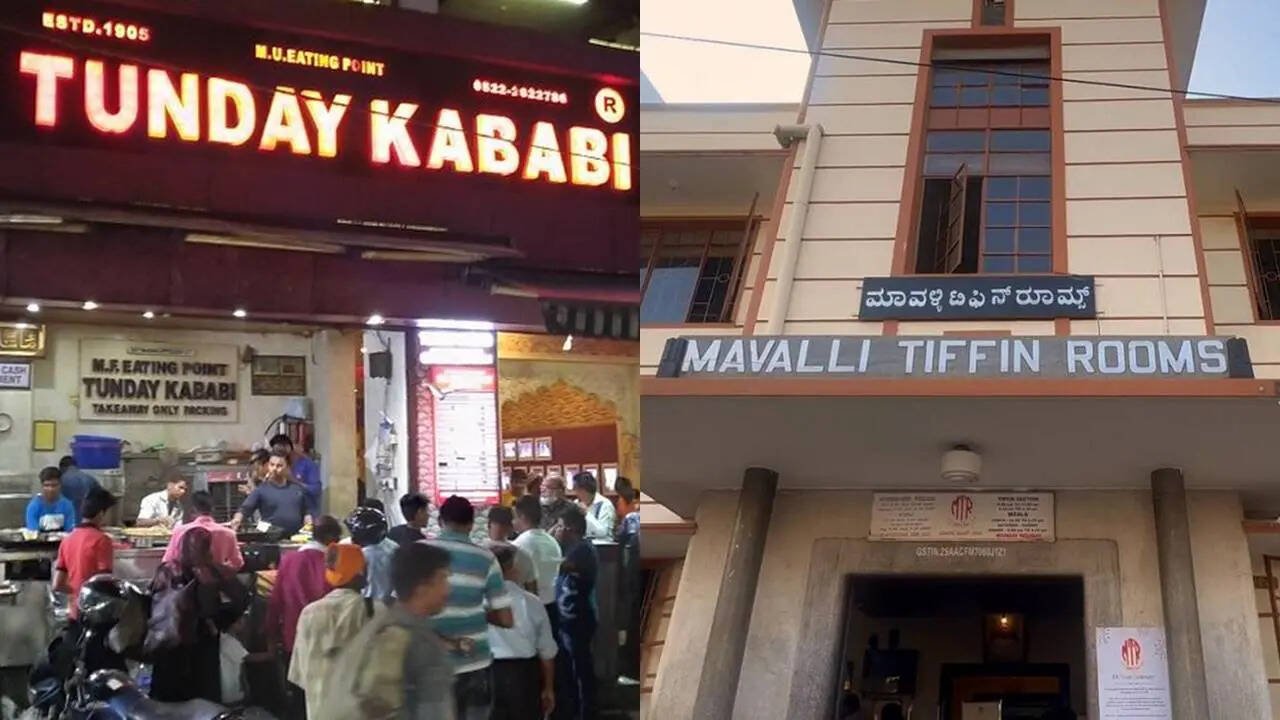
Iconic Pre-Independence Indian Restaurants Still Thriving in 2025
In a country where recipes are often handed down through generations with the precision of royal heirlooms, there exists a rare breed of restaurants that are not only feeding people but also serving up history – one plate at a time. Long before Instagram reels made food ‘viral’ and before Michelin stars began dictating taste, a few humble yet iconic establishments across India quietly began laying the foundations of what we now call the country’s culinary culture.
These restaurants have survived colonial rule, Partition, wars, food shortages, and fads like “zero oil” cooking. They’ve seen customers arrive on bullock carts, Ambassadors, and Ubers. Their menus haven’t changed much – and that’s precisely the point. To step into one of these is to step into a time capsule – where recipes are sacred, the décor proudly outdated, and every bite comes loaded with stories.
So this Independence Day, if you’re up for some edible nostalgia, here are five pre-1947 restaurants across India that deserve a spot on your bucket list – not just for the food, but for the legacy they carry.
1. Indian Coffee House, Kolkata
Founded: 1876 (Renamed in 1942)
Tucked into the eternally bustling College Street of Kolkata, the Indian Coffee House is less of a restaurant and more of a revolution. Originally set up as Albert Hall during the British Raj, the place transformed into Indian Coffee House in 1942 – and soon became the favourite adda (hangout) spot for intellectuals, poets, professors, and political revolutionaries.
The likes of Satyajit Ray, Amartya Sen, and Subhas Chandra Bose are said to have frequented this smoke-stained, high-ceilinged hall, where the sound of ideological debates was once louder than the clatter of plates.
Today, it still serves simple filter coffee, mutton cutlets, and that distinctive old-school charm. The waiters wear colonial-style uniforms, the walls are soaked in nostalgia, and the service? As delightfully slow as ever – but only because they want you to linger, not leave.
Fun Fact: The coffee here costs under ₹50, and it’s served with a side of political discussion on most tables.
2. Mavalli Tiffin Room (MTR), Bangalore
Founded: 1924
In the heart of Bengaluru’s Lalbagh Road lies a culinary institution that’s been dishing out comfort and consistency for over a hundred years. MTR is where you go not just to eat, but to feel hugged by food. Their masala dosas, crisp on the outside and bursting with spiced potato filling inside, are arguably among the finest in the country.
But the most endearing tale from MTR’s history comes from wartime scarcity. When rice became a luxury during World War II, the kitchen innovated and birthed the now-legendary rava idli – a fluffy steamed semolina cake that’s become a South Indian staple.
Clean, vegetarian, and famously punctual in its service, MTR today operates several outlets, but the original one retains its earthy charm and stainless-steel plates.
Fun Fact: The MTR kitchen runs on a clockwork system – they even have a time chart for dosa batter fermentation.
3. Britannia & Co., Mumbai
Founded: 1923
Step into Britannia & Co. in Ballard Estate, and you’ll feel like you’ve wandered into a Wes Anderson film set – pastel walls, rickety chairs, ancient cash registers, and a portrait of Queen Elizabeth gazing down from the wall. But the real royalty here is the food.
Run by the Kohinoor family, this Parsi restaurant is best known for its Berry Pulao, a fragrant rice dish adorned with barberries imported from Iran, cashew nuts, and tender mutton or chicken. It’s a recipe created by the matriarch, and the restaurant continues to follow it religiously.
The late Boman Kohinoor, the endearing patriarch who would personally greet guests and proudly flash a letter from the Queen, is still fondly remembered by loyalists. The menu also includes classic Parsi dishes like Sali Boti, Dhansak, and caramel custard.
Fun Fact: Boman Kohinoor was such a fan of the British monarchy that he campaigned for years to meet Prince William and Kate Middleton – and finally did in 2016.
4. Tunday Kababi, Lucknow
Founded: 1905
The story of Tunday Kababi is the stuff of culinary folklore. Haji Murad Ali, the one-armed kabab genius who started it all, was nicknamed ‘Tunday’ due to his physical disability – and the name stuck. But it’s the food that’s made the legend immortal.
The original shop in Aminabad continues to sell the iconic Galouti Kebab, a dish said to have been created for a toothless nawab who still craved meat. The kebabs are made using over 100 spices, minced finely and cooked on a tawa until they melt upon touching your tongue.
Tunday’s menu today also features Shami Kebabs, Biryani, and Sheermal – all rooted in the rich Awadhi culinary tradition. Though several offshoots have cropped up across the city, purists still swear by the flavour of the original location.
Fun Fact: The original Galouti Kebab recipe reportedly contains over 160 ingredients, though the exact list remains a closely guarded secret.
5. Karim’s, Delhi
Founded: 1913
Right in the shadow of Delhi’s Jama Masjid lies one of India’s most famous culinary legacies – Karim’s. Founded by Haji Karimuddin, a royal cook’s descendant, the restaurant began as a small eatery to serve those attending the mosque’s Eid prayers.
More than a century later, Karim’s is synonymous with Mughlai cuisine – rich, slow-cooked, unapologetically indulgent. Their Mutton Korma, Nihari, Seekh Kebabs, and Roghan Josh are not just meals – they are feasts that taste of history and tradition.
The ambience might be modest, but the taste remains royal. While newer outlets have sprouted across Delhi and even beyond, nothing beats the smoky charm and cramped quarters of the original location near Gate No.1 of Jama Masjid.
Fun Fact: During Partition, Haji Karimuddin reportedly fled to Meerut, only to return a few years later and rebuild the restaurant from scratch – brick by brick, spice by spice.
A Culinary Walk Through Time
In an era where pop-up eateries, QR-coded menus, and molecular gastronomy rule the roost, these age-old restaurants are reminders of a simpler, richer time. They don’t need reinvention – they are the tradition.
So, if you find yourself planning a trip across India and wondering where to eat, ditch the algorithms and follow the aromas of history instead. You’ll not only savour unforgettable dishes but also taste a bit of India’s past, served hot and with pride.
Restaurants & Food
Street food, sushi, Indian: favourite Hong Kong restaurants of a fermentation expert
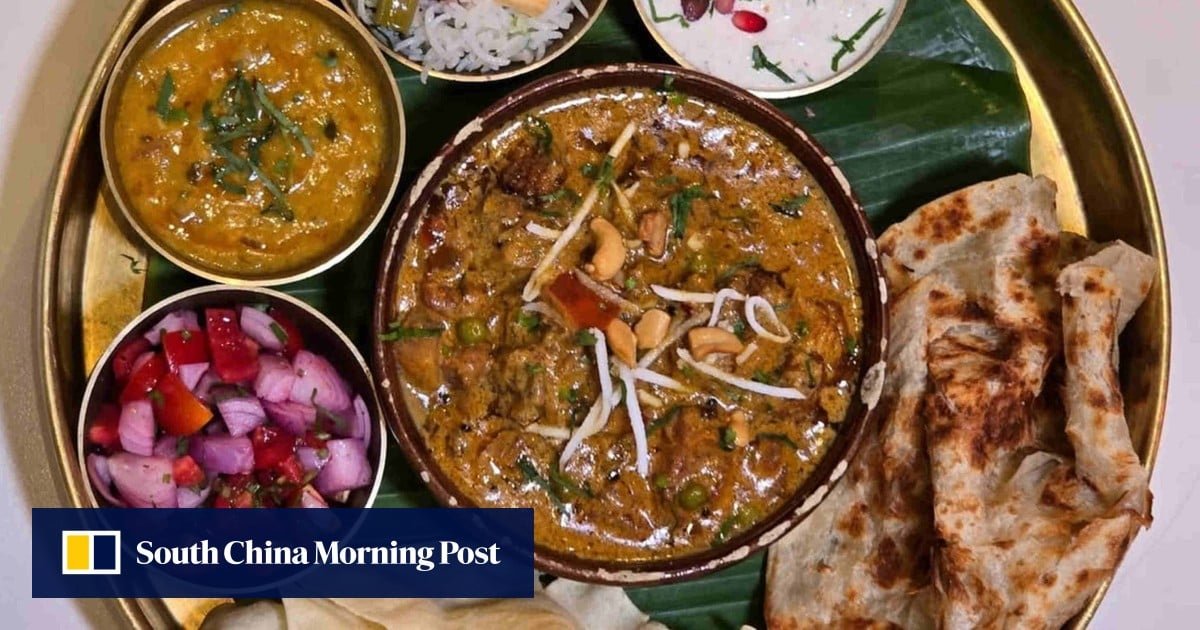
Fermentation enthusiast Tommy Leung is the founder of HakkoBako, a food tech start-up that builds fermentation chambers for chefs and mixologists. He also runs Mealthy, a meal prep service in Hong Kong. He spoke to Andrew Sun.
My dad went from Hong Kong to Sweden in the 1970s and opened Chinese restaurants there. I am blessed to have been immersed not only in Chinese food culture but also Swedish.
I am a big fan of the city’s modern Indian restaurants, especially their super-thick and creamy curries. Two favourites are Tagline (Shop G02-G04, G18-G22, Empire Centre, 68 Mody Road, Tsim Sha Tsui. Tel: 2329 3311) and Bengal Brothers (Shop D, Man Hee Mansion, 6 Johnston Road, Wan Chai. Tel: 9245 8774), especially for their Chettinad-style lamb curry. Somehow, these places pack twice or three times more flavour and richness, and I have no idea how they do it.
-

 Brand Stories2 weeks ago
Brand Stories2 weeks agoBloom Hotels: A Modern Vision of Hospitality Redefining Travel
-

 Brand Stories2 weeks ago
Brand Stories2 weeks agoCheQin.ai sets a new standard for hotel booking with its AI capabilities: empowering travellers to bargain, choose the best, and book with clarity.
-

 Destinations & Things To Do2 weeks ago
Destinations & Things To Do2 weeks agoUntouched Destinations: Stunning Hidden Gems You Must Visit
-

 Destinations & Things To Do2 weeks ago
Destinations & Things To Do2 weeks agoThis Hidden Beach in India Glows at Night-But Only in One Secret Season
-

 AI in Travel2 weeks ago
AI in Travel2 weeks agoAI Travel Revolution: Must-Have Guide to the Best Experience
-

 Brand Stories1 month ago
Brand Stories1 month agoVoice AI Startup ElevenLabs Plans to Add Hubs Around the World
-

 Brand Stories4 weeks ago
Brand Stories4 weeks agoHow Elon Musk’s rogue Grok chatbot became a cautionary AI tale
-

 Brand Stories2 weeks ago
Brand Stories2 weeks agoContactless Hospitality: Why Remote Management Technology Is Key to Seamless Guest Experiences
-

 Asia Travel Pulse1 month ago
Asia Travel Pulse1 month agoLooking For Adventure In Asia? Here Are 7 Epic Destinations You Need To Experience At Least Once – Zee News
-

 AI in Travel1 month ago
AI in Travel1 month ago‘Will AI take my job?’ A trip to a Beijing fortune-telling bar to see what lies ahead | China



